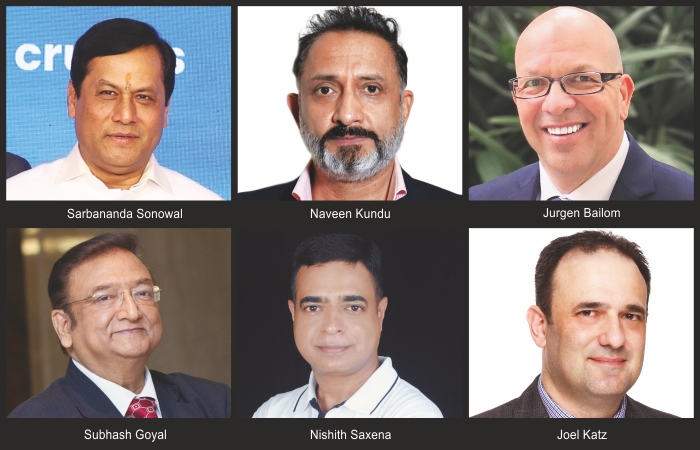The Union government aims to establish India as a global tourism hub and increase cruise traffic from 0.4 mn to 4 mn. However, experts highlight a few challenges that can be limiting factors for the progress of cruise tourism in the country.
Suhani Sood
Cruise shipping is one of the most exciting and rapidly expanding segments of the global leisure business. With respect to India, which have a beautiful coastline, rich culture and diversity in delicacies, the country can be amazing destination for cruise travellers. The Union government is taking several initiatives to boost cruise tourism, which can be seen in its decision to constitute a National Strategy for Cruise Tourism. Under the government initiatives, new routes and terminals are being developed or in pipeline.
Rise in cruise passenger volume
Sarbananda Sonowal, Union Minister, Ministry of Ports, Shipping, and Waterways (MoPSW), says the government is deeply committed to provide a world class infrastructure to enable growth of cruise travel and maritime trade. Sharing details about new cruise terminals, he said, “It gives me immense happiness to share that three new international terminals will be completed by 2024. Volume of cruise ships will increase from 208 to 1,100 by 2024.” He added, “Passenger numbers will also rise from 5 lakh in 2030 to 45 lakh in 2047. The government also plans to work on Gujarat Pilgrimage Tours, Cultural and Scenic Tours, Ayurveda Wellness Tours and heritage tourism to boost cruise tourism remarkably.”
Obstacles highlighted by experts
However, a few challenges highlighted by experts can be limiting factors, even if new routes are introduced or new cruises come to India. Naveen Kundu, Managing Director, EbixCash Travel Group, pointed out that India is not able to provide favourable environment, a major challenge hampering rise of domestic cruise tourism “Till the time we don’t provide favourable atmosphere to the cruise liners, no matter how many terminals are introduced or how many cruise liners come to India, they won’t be able to retain their position in India,” Kundu said.
Jurgen Bailom, President and CEO, Waterways Leisure and Cordelia Cruises, said that a major challenge has always been less awareness about cruising among potential tourists in the Indian market.
Echoing similar sentiments, Subhash Goyal, Chairman, STIC Travel Group, emphasized on negative attitude of Customs & Immigration department. Recalling a personal experience, Goyal said, “I visited Portugal and Spain, where I took a cruise and observed that cruise just had single digital identity card, which helped me for all the onboarding procedures. The movement with that card is so smooth that people board and deboard the cruise as if they are moving in metro or local trains. Till our Customs & Immigration department do not have this kind of attitude, no matter how many ships or cruises come to India, they won’t be able to sustain.”
He cited the example of one of his companies, Holland America Cruise. He said the amount of trouble and inconvenience they faced at Mumbai Port with respect to immigration and sailing procedures, they decided to blacklist the port. “If wishes were horses, all beggars would ride them,” he said.
Nishith Saxena, Founder & Director, Cruise Professionals, said: “It is good to be ambitious and confident, but how does the government plan to achieve 4 million mark? If this is an annual tourist count for cruise to be achieved by 2040, we have 15 years to achieve it, for which right step like appointing independent advisors, single-minded focus and regulations need to be followed, for progress.”
On the other hand, Kundu is not impressed by the number, as he feels India is such a rapid growing economy that 4 million is a “very small number”. “India would be able to achieve larger number for domestic cruising provided all stakeholders come together to create infrastructure and smooth sailing for cruise liners,” he said.
Collaboration is the key
Joel Katz, Managing Director, CLIA, said, “Collaboration is the key to achieve landmarks, with tourism authorities, local and national governments, cruise lines, tourism operators, port operators, ground operators, suppliers, food producers, technical support providers, local chambers of commerce, and retail associations. These collaborations might be led by government or by tourism authorities, or at a grassroots level they might be united by local business working groups and passionate individuals.”
 TravTalk India Online Magazine
TravTalk India Online Magazine





